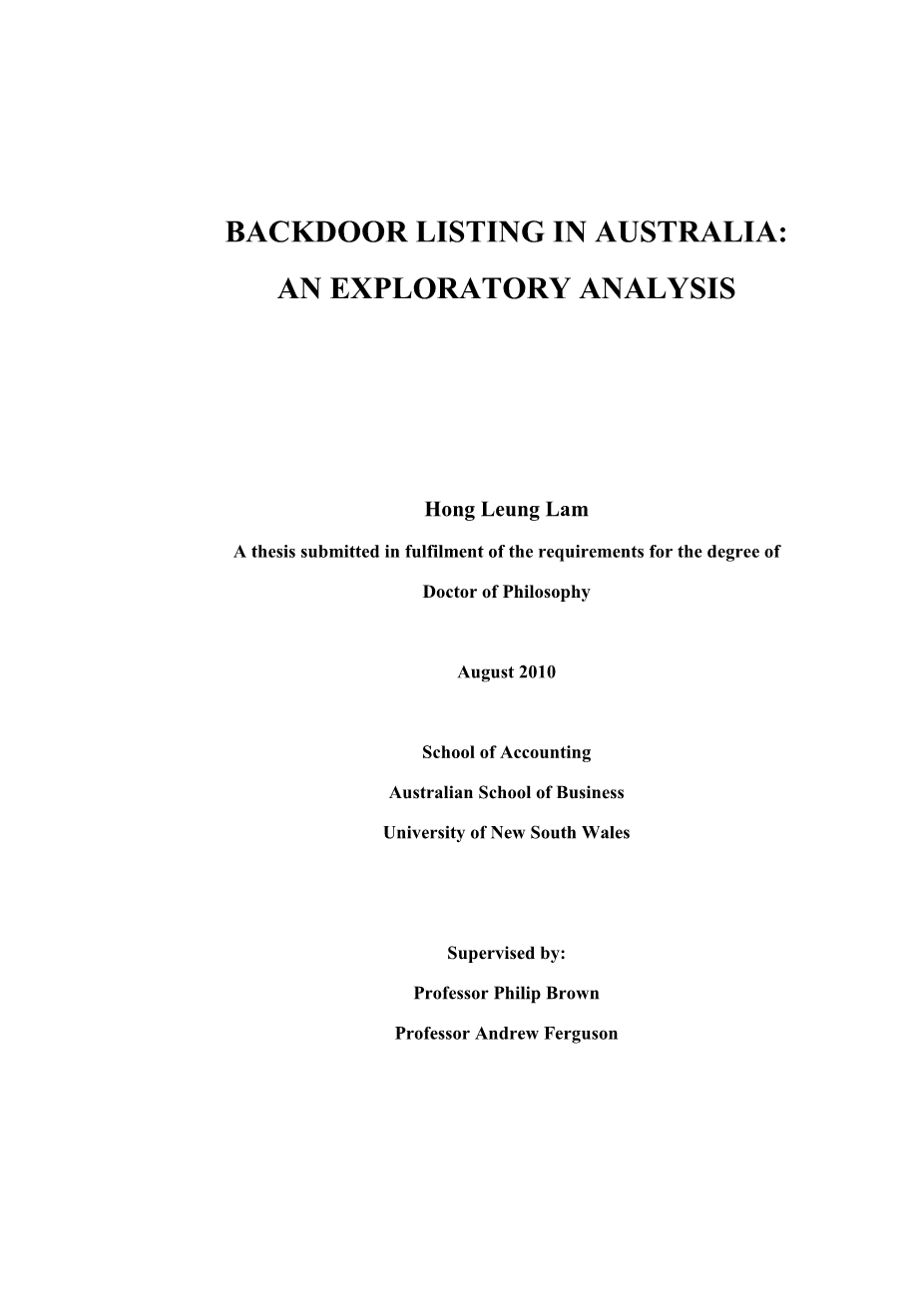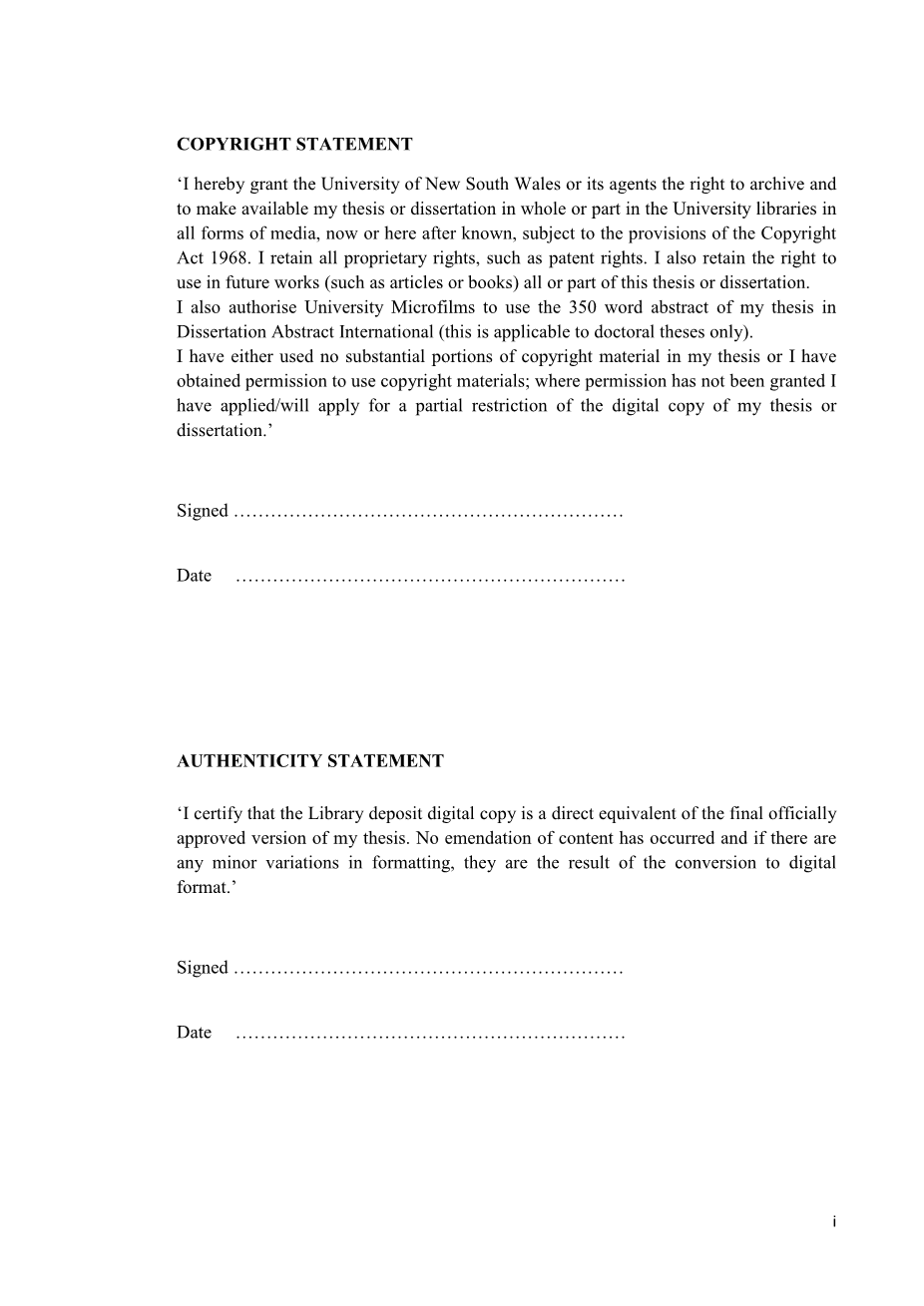英语原文共 236 页,剩余内容已隐藏,支付完成后下载完整资料
3.1 Introduction
Compared to IPOs, backdoor listings are a little-known process through which private firms can go public and obtain listing status on a stock exchange. The objective of this chapter is to explore the nature and characteristics of this type of capital market activity. Specifically, this chapter addresses the following empirical questions in the context of the Australian stock market.
What are backdoor listing transactions?
How are backdoor listing transactions conducted?
What are the characteristics of firms participating in backdoor listing transactions?
Are there discernible patterns in backdoor listing activities in terms of temporal and industry clustering?
This chapter is mostly descriptive in nature. Its purpose is to set the scene for an in-depth understanding of backdoor listing activities in Australia and for further empirical work in later chapters. The chapter is organised as follows. Section 3.2 provides an operational definition of backdoor listing. Section 3.3 discusses the regulatory framework governing backdoor listing transactions in Australia. Section 3.4 describes the sample identification and data collection process. Section 3.5 discusses the salient features of backdoor listing transactions. Section 3.6 presents the characteristics of the public and private firms participating in backdoor listing transactions. Section 3.7 addresses the temporal and industry clustering of BDL transactions. Finally, Section 3.8 summarises and concludes the chapter.
3.2 Backdoor Listings Defined
Backdoor listing is a loosely-defined term that generally refers to a sequence of structured inter-company events whereby a private firm achieves a listing status by undertaking a reverse takeover of a publicly-listed firm and using the corporate shell of the latter as a vehicle to go public.
In Australia, reverse takeover transactions are normally structured as an acquisition by the public firm of all the shares in the private firm, so that the latter becomes a wholly-owned subsidiary of the former. However, the deal can also be structured as an acquisition of assets and business operations from the private firm vendors. The public firm pays for the acquisition by issuing a large quantity of new shares with voting rights in the company to the private firm vendors. The consideration shares may be supplemented by other forms of consideration, which may include cash, stock options, convertible notes and earn-outs (e.g., performance shares). At the conclusion of the reverse takeover transaction, the private firm vendors obtain effective control of the combined public-private entity. The private firm becomes part of an enlarged group, which is publicly-listed. In fact, the private firm business and assets will become the dominant focus of the merged entity since the public firm is essentially a corporate shell with no or minimal operations.
From the above discussion, it is evident that change of control is the critical aspect of a reverse takeover transaction. Without a change of control, the transaction would be just like a normal (forward) acquisition. Jensen and Ruback (1983) define corporate control as “the rights to determine the management of corporate resources”. In other words, control can be regarded as the ability to set the future strategic direction of a company or change the way the companyrsquo;s assets are deployed. The change of control in a company can generally be effected through the following means: (i) ownership control—controls more than 50 percent of the voting shares, (ii) board control—controls more than half the seats on the board of directors, and (iii) management control—controls or occupies the position of chief executive officer (CEO) or managing director. For publicly-listed companies, because of the dispersion of ownership, a majority shareholding (i.e., greater than 50 percent) may not be necessary for gaining effective control. In fact, a much lower threshold (20 percent) of ownership has been set as triggering the takeovers provisions in the Corporations Act.
In this study, change of control is operationalised as follows. If vendors of the private firm collectively control 50 percent or more of the voting rights after the transaction of the public shell company through share ownership, a change of control is deemed to have occurred. Alternatively, if the 50 percent shareholding threshold is not reached, then a change of control is deemed to have occurred if the private firm vendors (i) collectively become the largest blockholder of shares in the public shell company, and (ii) either control more than half the seats on the board of directors or occupy the position of CEO or managing director.
3.3 Regulatory Framework
There is no formal regulation of reverse takeover or backdoor listing activities in Australia.5 In fact, the term “backdoor listing” (or “reverse takeover” or “reverse merger” for that matter) is not defined anywhere in the listing rules of ASX or the Corporations Act. Despite the absence of specific regulation on BDL transactions, there are provisions in the Corporations Act and the listing rules that may become operative and applicable to certain aspects of a backdoor listing transaction.
3.3.1 Takeovers Provisions of the Corporations Act
Section 606 of the Corporations Act prohibits a person, or parties acting in concert, from acquiring a relevant interest in the voting shares of a listed company or an unlisted company with more than 50 members (i.e., a public company) if, because of the transaction, that personrsquo;s or someone elsersquo;s voting power in the company increases (i) from 20 percent or below to more than 20 percent; or (ii) from a starting point that is above 20 percent and below 90 percent. The intention of this prohibition is to ensure all shareholder
剩余内容已隐藏,支付完成后下载完整资料
资料编号:[607579],资料为PDF文档或Word文档,PDF文档可免费转换为Word
以上是毕业论文外文翻译,课题毕业论文、任务书、文献综述、开题报告、程序设计、图纸设计等资料可联系客服协助查找。




